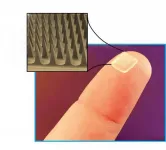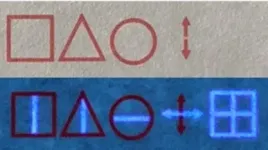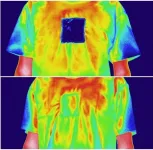(Press-News.org) A recent study from the University of Helsinki monitors the breakthrough progresses in the development of microneedles for immunotherapy and discusses the challenges regarding their production. Researchers suggest using microneedles for immunotherapy due to the high abundance of immune cells under the skin. The aim is to vaccinate or treat different diseases, such as cancer and autoimmune disorders, with minimal invasiveness and side effects.
"Our study addresses the recent achievements in the development of microneedles for immunotherapy of hard-to-treat and chronic diseases to achieve the highest efficiency with minimal side effects," says Professor Hélder A. Santos, from the University of Helsinki, Faculty of Pharmacy.
As a result of the dynamic nature of the human immune system, the current immunotherapy approaches have mostly been challenged by the lack of adequate long-term responses in patients. On the other hand, the development of microneedles has resulted in the improvement and expansion of immuno-reprogramming strategies since the dermis layer of the skin house a high accumulation of dendritic cells, macrophages, lymphocytes, and mast cells. These cells can transfer generated immunotherapeutic signals to the damaged organs.
According to the paper, microneedles maintain many outstanding properties, such as direct delivery of antibodies, allergens, and therapeutic antigens into the skin, minimal invasiveness, facile fabrication, excellent biocompatibility, convenient administration, and bypassing the first-pass metabolism that allows direct translocation of therapeutics into the systematic circulation. Moreover, transdermal microneedle can improve the biological effect of drugs through adjustable drug release.
Recent advancements of microneedles for immunotherapy of cancer
One of the primary objectives of cancer immunotherapy is the establishment of a broad tumor-targeting T cell repertoire that is able to recognize and destroy heterogeneous tumor cell populations. The paper indicates the suitability of the microneedles for this purpose and their future clinical use, owing to the short treatment time with improvement of patient convenience, and prolonging the overall survival compared to traditional vaccination.
In the case of intramuscular or subcutaneous vaccination, patients might experience stress, fear, pain, and undesirable specific immune responses. In this regard, using microneedles could be a good choice to achieve maximum delivery while limiting side effects. In conclusion, microneedle patches may represent an excellent alternative to conventional cancer vaccine designs by allowing a painless administration in the skin area, which is rich in antigen-presenting cells.
Finally, microneedles can also play a role in improving the efficacy of immune checkpoint inhibitors, allowing for local delivery in the tumor area with a decrease in the immune side effect associated with systemic delivery.
Unanswered challenges and future trends of microneedles for immunotherapeutic applications
According to the researchers, concerns regarding the future success of microneedles for clinical immunotherapy are also dependent on FDA approval for novel biomaterials used in this delivery system for microneedles fabrication.
"In addition, future developments should take into account some of the current challenges, including the difficulty of precise coating of biomolecules on the microneedles and insufficient delivery of therapeutic antigens, allergens, or immunotherapeutic drugs to the desired site," says Professor Santos.
The improvement of the mechanical properties of microneedles is another decisive factor for successful clinical translation and future commercialization. The mechanical characteristics of microneedles must meet two properties to ensure successful immunotherapy. First, the insertion force should be enough to neglect the skin friction force for the insertion of the microneedles before puncturing the skin. Second, the insertion force must be higher than the skin force to perforate the skin and create holes in the epidermis/dermis layer.
Researchers have recently focused on polymer science to fabricate biocompatible or dissolvable polymeric microneedles with minimum side effects. Therefore, it is expected to see a tremendous interest in designing biocompatible and dissolvable microneedle systems in the near future with current advances in polymer science.
"The selection of a suitable material that contributes to the localization of antigen within the microneedles is a substantial issue that needs much attention to optimize immunotherapy of various diseases by microneedles. We estimate that in the near future, we will observe a high interest in the design and fabrication of biocompatible and dissolvable polymeric microneedles systems for immunotherapeutic applications, among others," concludes Professor Santos.
In 2019, Professor Santos' research team, together with the Helsinki Innovation Services, received over 1.3 M€ from Business Finland to further study microneedles for drug delivery applications and their potential to become a commercial product.
INFORMATION:
There is currently no consensus on what quality end-of-life care for children with cancer looks like, or how to measure and deliver it; however, investigators recently assembled an expert panel to help fill this void. In a study published early online in CANCER, a peer-reviewed journal of the American Cancer Society, the panel endorsed 16 measures that cover different aspects of care that are important for children with cancer and their families.
"Measuring the quality of the care delivered is an essential part of ensuring high quality end-of-life care ...
Coded messages in invisible ink sound like something only found in espionage books, but in real life, they can have important security purposes. Yet, they can be cracked if their encryption is predictable. Now, researchers reporting in ACS Applied Materials & Interfaces have printed complexly encoded data with normal ink and a carbon nanoparticle-based invisible ink, requiring both UV light and a computer that has been taught the code to reveal the correct messages.
Even as electronic records advance, paper is still a common way to preserve data. Invisible ink can hide classified economic, commercial or military ...
Marine scientists are calling on the EU to adopt a comprehensive plan to protect dolphins and porpoises from fisheries bycatch in European waters.
A team of conservation experts, including Newcastle University's Professor Per Berggren, highlight limitations in EU's efforts to address and mitigate bycatch. The scientists argue this infective response is a result of scattered and complicated management responsibility for the conservation of dolphins and porpoises in Europe, and from a lack of quantitative conservation objectives, including biological reference points ...
Reflexes protect our bodies - for example when we pull our hand back from a hot stove. These protective mechanisms could also be useful for robots. In this interview, Prof. Sami Haddadin and Johannes Kühn of the Munich School of Robotics and Machine Intelligence (MSRM) of the Technical University of Munich (TUM) explain why giving test subjects a "slap on the hand" could lay the foundations for the robots of the future.
In your paper, published in Scientific Reports, you describe an experimental setup where people were actually slapped on the hand - to study their reflexes....
Kühn: Yes, you can put it that way. For our study, in cooperation with Imperial College London, the test ...
Clothing, from tank tops to parkas, helps people adapt to temperatures outdoors. But you can only put on or take off so much of it, and fluctuations in weather can render what you are wearing entirely inadequate. In a new study in ACS' Nano Letters, researchers describe a high-tech alternative: a reversible textile they designed to trap warmth in the cold and reflect it during hot weather, all while generating small amounts of electricity.
Previous attempts to develop such sophisticated textiles for outdoor use have generally focused on either capturing thermal radiation or dispersing it. To integrate the two, Qiang Li, Min Qiu and colleagues made a ...
More research is urgently needed into the impact that attending suicide events is having on paramedics and other first responders, a researcher at the University of Otago, New Zealand, says.
PhD student Renan Lyra, a psychologist by training, says a significant proportion of police officers, firefighters and paramedics will attend at least one suicide event in their careers, but there has been little research into the impact this has on their personal and professional lives and on their own suicide risk.
Mr Lyra has reviewed 25 research papers on the impact attending a suicide event has on those ...
A curiously yellow star has caused astrophysicists to reevaluate what's possible within our universe.
Led by Northwestern University, the international team used NASA's Hubble Space Telescope to examine the massive star two-and-a-half years before it exploded into a supernova. At the end of their lives, cool, yellow stars are typically shrouded in hydrogen, which conceals the star's hot, blue interior. But this yellow star, located 35 million lightyears from Earth in the Virgo galaxy cluster, was mysteriously lacking this crucial hydrogen layer at the time of its explosion.
"We haven't seen this scenario before," said Northwestern's ...
CATONSVILLE, MD, May 4, 2021 - Paid video streaming services on your television, smart phone or other devices are increasingly replacing traditional video entertainment platforms of cable, satellite and broadcast TV. The growth of these services, known in the industry as over-the-top (OTT) media services, may be accompanied by a rise in pirated content, particularly where access to those services may be restricted, a group of researchers has found.
The researchers studied the effects of the Netflix - one of the leading global companies in paid video streaming - and its growth in 40 Asian countries. They also studied one country where access to Netflix was restricted, which is where ...
Carnegie Mellon University's He Lab is focusing on noninvasive neuroengineering solutions that not only provide diagnostic techniques, but also innovative treatment options. Their latest research has demonstrated that noninvasive neuromodulation via low-intensity ultrasound can have cell-type selectivity in manipulating neurons.
Parkinson's Disease, epilepsy and insomnia are just a few of the neurological disorders that use neuromodulation treatment techniques today. Neuromodulation delivers controlled physical energy to the nervous system to treat and improve patients' quality of life. Current neuromodulation approaches, while effective, bring both drawbacks and limitations.
"Deep ...
When light hits certain molecules, it dislodges electrons that then move from one location to another, creating areas of positive and negative charge. This "charge transfer" is highly important in many areas of chemistry, in biological processes like photosynthesis and in technologies like semiconductor devices and solar cells.
Even though theories have been developed to explain and predict how charge transfer works, they have been validated only indirectly because of the difficulty of observing how a molecule's structure responds to charge movements with the ...






